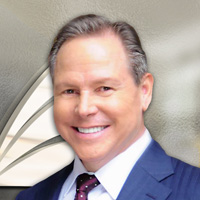Build Your Retirement Plan With a Strong Fiscal Foundation
You need to develop a strategy that can get you to and through retirement.

When people dream about retirement, they think about the things they'll do, the places they'll go, the people they'll see.
Unfortunately, too often what they don't think about is how they're going to pay for all that.
They've got Social Security coming, maybe some savings, a 401(k) from work and perhaps a pension—but no real idea of how far that will stretch or what their future may require.
From just $107.88 $24.99 for Kiplinger Personal Finance
Become a smarter, better informed investor. Subscribe from just $107.88 $24.99, plus get up to 4 Special Issues

Sign up for Kiplinger’s Free Newsletters
Profit and prosper with the best of expert advice on investing, taxes, retirement, personal finance and more - straight to your e-mail.
Profit and prosper with the best of expert advice - straight to your e-mail.
Instead, they'll pick out an age. "I'm going to retire at 67," they'll say, without any plan for how that's going to happen.
But no one can say with 100% certainty what their life is going to look like five years out, much less in 10 or 20 years. And some people retiring in their 60s could live for another 25 or even 30 years. So the number you really have to know isn't how old you'll be when you retire—it's how much you'll need.
Then you and your financial adviser can develop a strategy to help you work toward that number.
In this way, a financial adviser is like an architect, creating a "retirement blueprint" for you based on your individual needs and goals. With such a blueprint, your adviser can better assist you with charting out a retirement that matches your vision for your later years.
A lot of the people I meet with know what they want their retirement to look like, and they're working on acquiring what they need to build it, but they don't have that blueprint to put the whole thing together. They don't have a structured way of drawing down certain assets, implementing cash flow on others, dealing with inflation and taxes or assuring asset protection if someone needs long-term care.
Instead, like so many people who are nearing or in retirement, they have a sort of "kitchen junk drawer" of retirement products that they've accumulated over the years, but with no overarching strategy that can help them work toward achieving the secure and satisfying retirement they desire.
The first conversation you have with your financial adviser lays the cornerstone, so treat it like an interview. Talk to more than one adviser until you find a connection, and make sure it's about developing a strategy, not focused solely on products.
One thing I like to do with new clients is run a Morningstar report early on for a 10-year look back at their current investment mix. This will give them a window into the past and an opportunity to see how their portfolio behaved during certain market cycles. Then we can look at the sort of behaviors a different plan would have compared with the plan they're using.
Financial vehicles—such as fixed annuities with guaranteed lifetime income riders and single premium immediate annuities—that guarantee steady, safe cash flow should make up the foundation of your fiscal house. Those guarantees, of course, are backed by the financial strength of the issuing insurer. Then you can sprinkle in certain amounts of risk, depending on your tolerance. (I like to lean on the Rule of 100, which uses age to determine asset allocation. For example, if you're 50, 50% of your money should be in safer investments and 50% would be a bit riskier. At 65, 65% should be safe. And so on.)
A good adviser will make sure the strategy is designed to evolve with you in your golden years. If you need to turn on a dime because of a life change, you'll have the flexibility to do that. And as you go, he or she can help you find the tools to help fill gaps in your retirement plan.
You'll make decisions based on information instead of emotion. Your adviser will focus on creating a strategy for you, not solely on products.
The goal is to build a cohesive strategy together that is designed to help you keep the lifestyle you had before retirement. Or, better yet, potentially provide you with the lifestyle of your dreams.
Kim Franke-Folstad contributed to this article.
Investment advisory services offered only by duly registered individuals through AE Wealth Management, LLC (AEWM). AEWM and Solutions First, Inc. are not affiliated companies. The appearances in Kiplinger were obtained through a PR program. The columnist received assistance from a public relations firm in preparing this piece for submission to Kiplinger.com. Kiplinger was not compensated in any way.
Profit and prosper with the best of Kiplinger's advice on investing, taxes, retirement, personal finance and much more. Delivered daily. Enter your email in the box and click Sign Me Up.

Joseph Donti is a Registered Investment Advisor at Safeguard Investment Advisory Group. He runs the Arizona office alongside his wife, Patty Donti, and is committed to helping families create amazing retirements and find lasting financial confidence. He has passed his Series 65 exam and holds life and health licenses in Arizona and California.
-
 Stocks Chop as the Unemployment Rate Jumps: Stock Market Today
Stocks Chop as the Unemployment Rate Jumps: Stock Market TodayNovember job growth was stronger than expected, but sharp losses in October and a rising unemployment rate are worrying market participants.
-
 Should You Renew Your CD?
Should You Renew Your CD?With rate cuts impacting earnings, we examine if now is a wise time to renew CDs.
-
 7 Ways to Plan Now to Save on Medicare IRMAA Surcharges Later
7 Ways to Plan Now to Save on Medicare IRMAA Surcharges LaterUnderstand the critical two-year lookback period and why aggressive planning before you enroll in Medicare is the most effective way to minimize IRMAA.
-
 Your Year-End Tax and Estate Planning Review Just Got Urgent
Your Year-End Tax and Estate Planning Review Just Got UrgentChanging tax rules and falling interest rates mean financial planning is more important than ever as 2025 ends. There's still time to make these five key moves.
-
 Past Performance Is Not Indicative of Your Financial Adviser's Expertise
Past Performance Is Not Indicative of Your Financial Adviser's ExpertiseMany people find a financial adviser by searching online or asking for referrals from friends or family. This can actually end up costing you big-time.
-
 I'm a Financial Planner: If You're Not Doing Roth Conversions, You Need to Read This
I'm a Financial Planner: If You're Not Doing Roth Conversions, You Need to Read ThisRoth conversions and other Roth strategies can be complex, but don't dismiss these tax planning tools outright. They could really work for you and your heirs.
-
 Could Traditional Retirement Expectations Be Killing Us? A Retirement Psychologist Makes the Case
Could Traditional Retirement Expectations Be Killing Us? A Retirement Psychologist Makes the CaseA retirement psychologist makes the case: A fulfilling retirement begins with a blueprint for living, rather than simply the accumulation of a large nest egg.
-
 I'm a Financial Adviser: This Is How You Can Adapt to Social Security Uncertainty
I'm a Financial Adviser: This Is How You Can Adapt to Social Security UncertaintyRather than letting the unknowns make you anxious, focus on building a flexible income strategy that can adapt to possible future Social Security changes.
-
 I'm a Financial Planner for Millionaires: Here's How to Give Your Kids Cash Gifts Without Triggering IRS Paperwork
I'm a Financial Planner for Millionaires: Here's How to Give Your Kids Cash Gifts Without Triggering IRS PaperworkMost people can gift large sums without paying tax or filing a return, especially by structuring gifts across two tax years or splitting gifts with a spouse.
-
 'Boomer Candy' Investments Might Seem Sweet, But They Can Have a Sour Aftertaste
'Boomer Candy' Investments Might Seem Sweet, But They Can Have a Sour AftertasteProducts such as index annuities, structured notes and buffered ETFs might seem appealing, but sometimes they can rob you of flexibility and trap your capital.
-
 Quick Question: Are You Planning for a 20-Year Retirement or a 30-Year Retirement?
Quick Question: Are You Planning for a 20-Year Retirement or a 30-Year Retirement?You probably should be planning for a much longer retirement than you are. To avoid running out of retirement savings, you really need to make a plan.